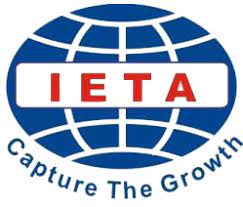Identifying Grammatical and Mechanical Errors of Students’ Writing: Using “Grammarly” as an Online Assessment
 ),
), (1) Institut Teknologi Bisnis AAS Indonesia
 Corresponding Author
Corresponding Author
Copyright (c) 2022 Lingua Didaktika: Jurnal Bahasa dan Pembelajaran Bahasa
DOI : https://doi.org/10.24036/ld.v16i2.116824
Full Text:
 Language : en
Language : en
Abstract
This research investigates “Grammarly” as one tool of an online assessment in identifying grammatical and mechanical errors of students in writing English. This research is descriptive qualitative research. The result analysis shows that Grammarly is used to assess the students’ writing both grammatical and mechanical (spelling, punctuation, and capitalization) errors. From Grammarly report, it represents the quality of writing. First, student A’s text score is 46 out of 100. It is found writing issues (both grammatical and mechanical errors) such as confusing words, punctuation in compound/complex sentences, misspelled words, determiner use, incorrect verb forms, faulty subject-verb agreement, pronoun use, conjunction use, incomplete sentences also wordy sentences. Second, student B’s text score is 37 out of 100. It is found writing issues (both grammatical and mechanical errors) such as confusing words, misspelled words, determiner use, mixed dialects of English, incorrect noun numbers, pronoun use, incorrect verb forms, and comma misuse within clauses. Grammarly is an online proofreading service that checks for students’ grammar, spelling, and punctuation errors. Grammarly automatically verifies or detects the work typed based on a variety of factors and reveals a variety of student writing errors, both in terms of grammatical and mechanical. This finding suggests that teachers/lecturers can use Grammarly as online automated software to implement corrective evaluation of the EFL or non-EFL students’ writing. They can examine and analyze students' errors in great depth without having to make a lot of corrections or improvements manually.
References
Anderson, J. (2005). Mechanically Inclined: Building Grammar, Usage, and Style Into Writer’s Workshop. Stenhouse Publishers.
Barkaoui, K., & Hadidi, A. (2020). Assessing Change in English Second Language Writing Performance. Routledge.
Barrot, J. S. (2020). Integrating Technology into ESL/EFL Writing through Grammarly. RELC Journal, 0033688220966632. https://doi.org/10.1177/0033688220966632
Bashir, Y. (2021). Academic Writing for College Students: Learn Academic Writing with Peace of Mind! Lulu Press, Inc.
Bouchoux, D. E. (2019). Legal Research and Writing for Paralegals. Wolters Kluwer.
Braun, V., & Clarke, V. (2013). Successful Qualitative Research: A Practical Guide for Beginners. SAGE Publication.
Donoghue, M. R. (2008). Language Arts: Integrating Skills for Classroom Teaching. SAGE Publications.
Fitria, T. N. (2021a). Grammarly as AI-powered English Writing Assistant: Students’ Alternative for Writing English. Metathesis: Journal of English Language, Literature, and Teaching, 5(1), 65–78. https://doi.org/10.31002/metathesis.v5i1.3519
Fitria, T. N. (2021c). “Grammarly” as a Teachers’ Alternative in Evaluating Non -EFL Students Writings. LEKSEMA: Jurnal Bahasa Dan Sastra, 6(2), 141–152. https://doi.org/10.22515/ljbs.v6i2.3957
Geye, S. (2003). Mini Lessons for Revision: How to Teach Writing Skills, Language Usage, Grammar, and Mechanics in the Writing Process. Absey & Company.
Gitsaki, C., & Coombe, C. (2016). Current Issues in Language Evaluation, Assessment and Testing: Research and Practice. Cambridge Scholars Publishing.
Gladwyn, C. (2018). How to be a Virtual Assistant. Catherine Gladwyn.
Gómez-Galán, J. (2016). Educational Research in Higher Education. River Publishers.
Griffin, P. (2014). Assessment for Teaching. Cambridge University Press.
Hakiki, G. N. R. (2021). Perception of EFL Students on the Use Grammarly Application in Writing Class. EDUVELOP, 4(2), 99–106. https://doi.org/10.31605/eduvelop.v4i2.891
Hammeken, P. A. (2007). The Teacher’s Guide to Inclusive Education: 750 Strategies for Success! Corwin Press.
Haven, K. (2014). Writing Workouts to Develop Common Core Writing Skills: Step-by-Step Exercises, Activities, and Tips for Student Success, Grades 2–6. ABC-CLIO.
Karyuatry, L. (2018). Grammarly as a Tool to Improve Students’ Writing Quality: Free Online-Proofreader across the Boundaries. JSSH (Jurnal Sains Sosial Dan Humaniora), 2(1), 83–89. https://doi.org/10.30595/jssh.v2i1.2297
Koll, T. J. (2012). Better Writing: Beyond Periods and Commas. R&L Education.
MacArthur, C. A., Graham, S., & Fitzgerald, J. (2016). Handbook of Writing Research, Second Edition. Guilford Publications.
Mayer, R. E. (2003). Learning and Instruction. Merrill.
Miles, M. B., & Huberman, A. M. (1994). Qualitative Data Analysis: An Expanded Sourcebook (Second Edition). SAGE Publication.
Morris, T. (2020). Discord For Dummies. John Wiley & Sons.
Pratama, Y. D. (2021). The investigation of using Grammarly as an online grammar checker in the process of writing. English Ideas: Journal of English Language Education, 1(2), Article 2. https://journal.unsika.ac.id/index.php/IDEAS/article/view/4180
Prater, M. A. (2016). Teaching Students With High-Incidence Disabilities: Strategies for Diverse Classrooms. SAGE Publications.
Punch, K. F. (2013). Introduction to Social Research: Quantitative and Qualitative Approaches. SAGE Publication.
Reddy, G. L. (2004). Language Disorders And Intervention Strategies: A Practical Guide To The Teachers. Discovery Publishing House.
Ronn, M. L. (2021). Advanced Author Editing: How to Create Cleaner Manuscripts. Author Level Up LLC.
Shermis, M. D., & Burstein, J. (2013). Handbook of Automated Essay Evaluation: Current Applications and New Directions. Routledge.
Syafi’i, A. (2020). Grammarly: An Online EFL Writing Companion. ELTICS: Journal of English Language Teaching and English Linguistics, 5(2), Article 2. https://doi.org/10.31316/eltics.v5i2.912
Taylor, D. B. (2014). Writing Skills in Nursing and Healthcare: A Guide to Completing Successful Dissertations and Theses. SAGE Publication.
Ventayen, R. J., & Orlanda-Ventayen, C. C. (2018). Graduate students’ perspective on the usability of Grammarly® in one ASEAN state university. Asian ESP Journal, 14, 9–30.
Walpole, J. (2000). Understanding Written Grammar. Telemachos Publishing.
Yigal, R. (2015). Handbook of Research on Technology Tools for Real-World Skill Development. IGI Global.
You, X. (2018). Transnational Writing Education: Theory, History, and Practice. Routledge.
 Article Metrics
Article Metrics
 Abstract Views : 760 times
Abstract Views : 760 times
 PDF Downloaded : 213 times
PDF Downloaded : 213 times
Refbacks
- There are currently no refbacks.
Copyright (c) 2022 Lingua Didaktika: Jurnal Bahasa dan Pembelajaran Bahasa

This work is licensed under a Creative Commons Attribution-NonCommercial 4.0 International License.









